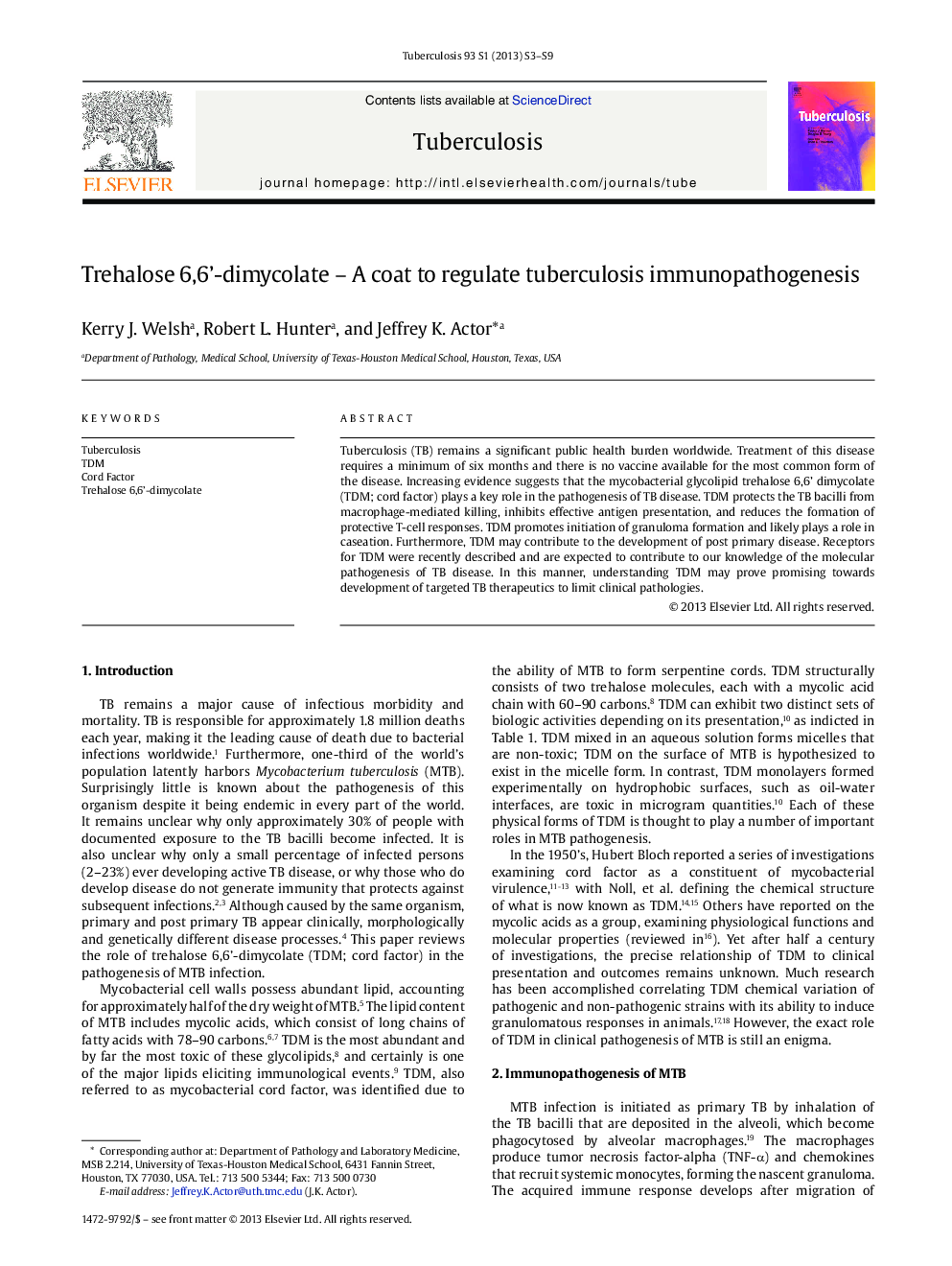| Article ID | Journal | Published Year | Pages | File Type |
|---|---|---|---|---|
| 2401533 | Tuberculosis | 2013 | 7 Pages |
Tuberculosis (TB) remains a significant public health burden worldwide. Treatment of this disease requires a minimum of six months and there is no vaccine available for the most common form of the disease. Increasing evidence suggests that the mycobacterial glycolipid trehalose 6,6′ dimycolate (TDM; cord factor) plays a key role in the pathogenesis of TB disease. TDM protects the TB bacilli from macrophage-mediated killing, inhibits effective antigen presentation, and reduces the formation of protective T-cell responses. TDM promotes initiation of granuloma formation and likely plays a role in caseation. Furthermore, TDM may contribute to the development of post primary disease. Receptors for TDM were recently described and are expected to contribute to our knowledge of the molecular pathogenesis of TB disease. In this manner, understanding TDM may prove promising towards development of targeted TB therapeutics to limit clinical pathologies.
